1lumen selects and reviews products personally. We may earn affiliate commissions through our links, which help support our testing.
Speras E3 review
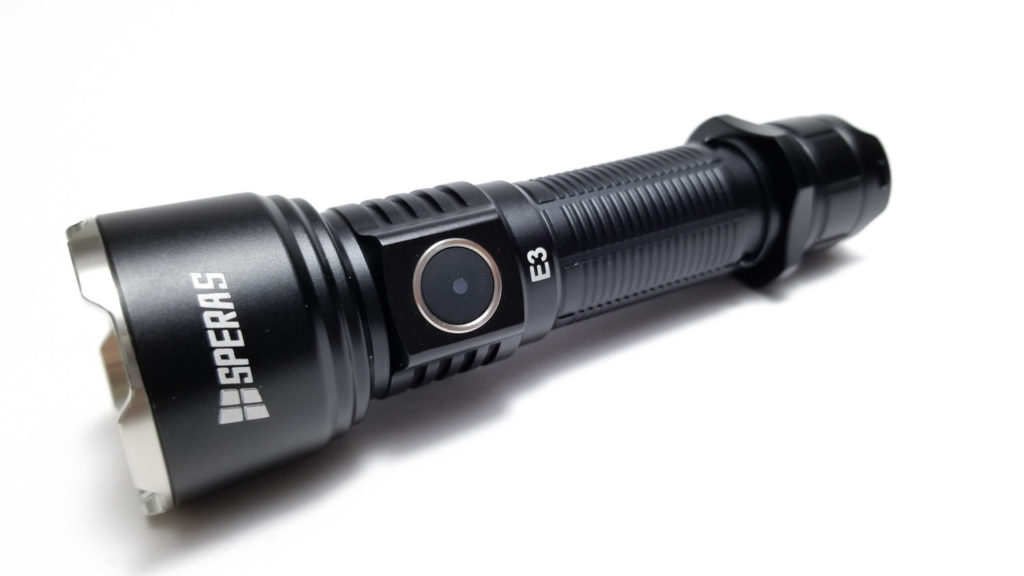
Speras E3 specifications
| Brand/model | Speras E3 |
|---|---|
| Category | Tactical flashlight |
| LED | OSRAM P9 |
| Lumens | 1,300 lm |
| Beam intensity | 30,700 cd |
| Battery config. | 1*18650 / 2*CR123A |
| Material | Aluminum |
| Modes | 4 |
| Blinkies | Strobe, SOS |
| Reflector | Smooth |
| Waterproof | IPX8 |
| Review date | November 2021 |
Introduction:
Other than some musings in forums and reading reviews, I don’t have much experience with Speras flashlights…until now. Officially known as Shenzen Speras Lighting Co. Ltd, Speras has been making very nice flashlights for a while. All their R&D and testing is done in house (a good thing), and they mainly market to professional users (military, police, first responders, etc.). They have quite a diverse lineup with lots of applications to choose from: Tactical lights, EDC, throwers, and even some slick zoomies. Owen reviewed the TH2 and found it to be quite good (for a zoomie). Other items include a good variety of accessories (rifle mounts, holsters, batteries, remote switches, diffusers, etc.). The tactical flashlight market is extremely crowded and very competitive, and it seems like a new “tactical/tacti-cool” flashlight comes out every couple of months. Speras must have felt left out since they have released a new tactical-use flashlight as well. Called the E3, it’s a dual-switch light targeted towards military, law enforcement, and first responders, and has some nice features. By the way, Speras is derived from the Latin word Spero, which means “hope.” Here’s hoping the E3 is different enough to keep it competitive amongst the establishment.
Package quality.
I’m glad the folks at Speras carefully packaged the E3 (it was in a box within a box) because the outer box the E3 was riding in was completely trashed, almost like the FedEx fellas decided to use it as a rugby ball. Aside from a dented top, the main packaging was otherwise undamaged. No surprise, the packaging is typical Acebeam…I mean Cyansky. Wait, this is a Speras light, right? Seriously, the packaging is a mirror-image of the Cyansky K3 and Acebeam L17, with an attractive retail-friendly presentation with a hang tag and lots of feature blurbs and specs. Inside, the E3 was riding in a molded carrier with the accessories underneath. Here’s what’s inside:
- Speras E3 flashlight
- Speras R34 3400 mAh 18650 with USB charging (loaded in the light)
- Pocket clip (attached)
- USB C charging cable
- User manual
- 2 spare o-rings
- Warranty card
- Holster
- Lanyard
You get everything needed to get going including the battery, which is awesome since you don’t need to buy anything. Everything seems good quality so no complaints. The holster looks identical to the one that came with the Cyansky K3. The battery was preinstalled with a plastic isolator to keep it from dumping during storage. The battery read 3.7 volts when I pulled it, and this is an ideal storage voltage.
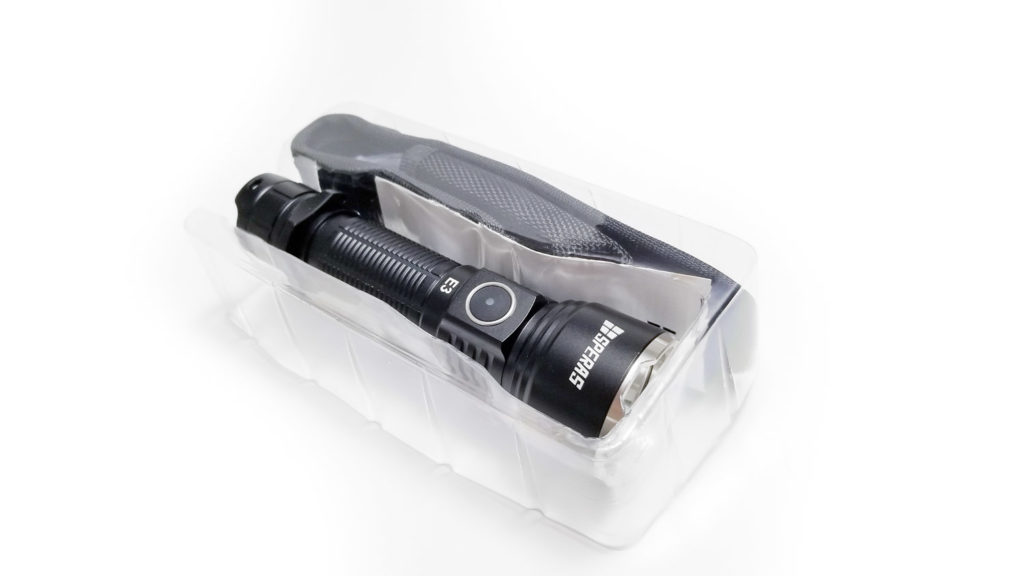
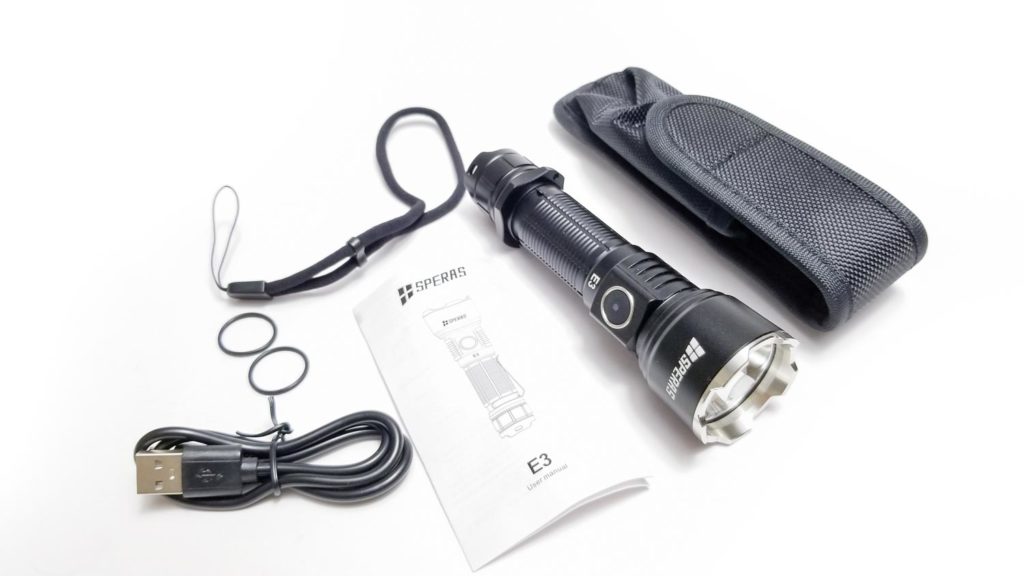
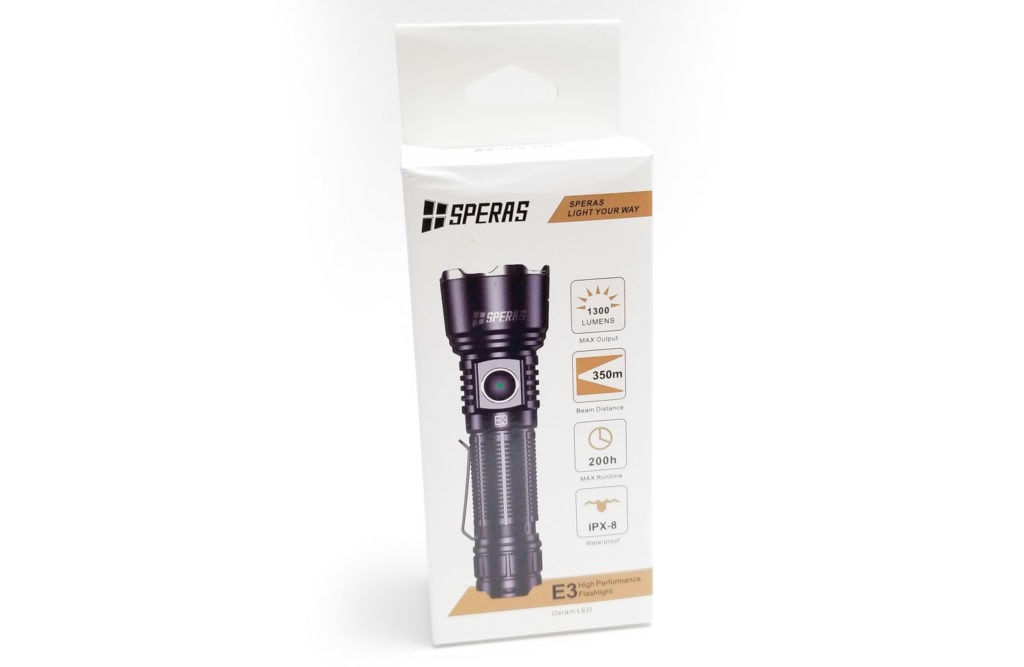
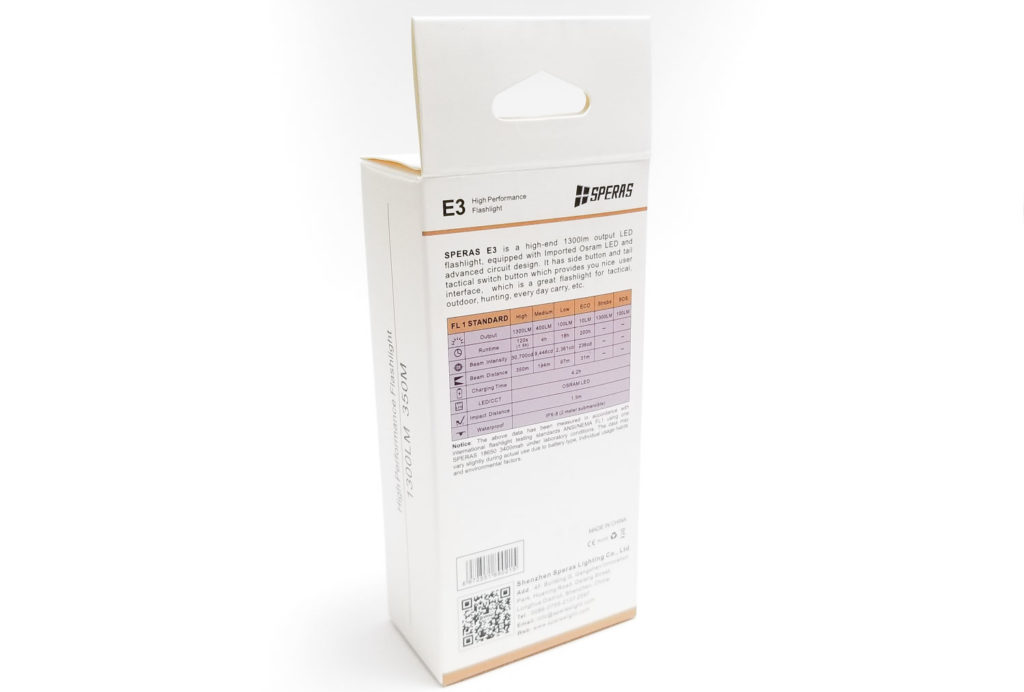
Flashlight in use
While the E3 is designed to be a tactical light, I think it’s better suited to use as a duty light and has features that will appeal to those users (police, security, paramedics, etc.). It’s about the same size as a C8, and the weight is also similar, so if you’ve handled a C8 style light, you will be right at home with the E3. Despite being an 18650-size tube and not the larger 21700 size, it felt great in the hand, with enough heft to feel substantial without being clunky and cumbersome. It’s pretty maneuverable.
The tube has a milled pattern like the Cyansky K3 and Thrunite TC20 V2 for grip, and it’s very effective. There’s a detachable pocket clip that fits into a groove in the tube, and it’s fairly easy to remove, but still has enough tension to hold it in place. Speras also included a removable ring for using the light with a cigar grip. The tailcap has two mount points for the lanyard 180 degrees apart, and the grip ring also has a hole in it so there’s several options for mounting the lanyard. The nylon holster allows bezel-up carry only, and features a plastic D-ring as well as a belt loop with Velcro and retaining snap for solid retention.
Like its competitors, the E3 has two switches, a front e-switch and rear forward clicky. The front is for mode switching and has a center-mounted LED indicator for battery condition and charging state (it’s only illuminated during use, not continuously). I really liked the click action, and the travel was short with great feel and feedback. It has a nice soft, but grippy texture to it as well. However, it wasn’t very easy to find in the dark since it’s the same texture as the charging port cover directly opposite it on the head. Until I got used to it, I was pressing the charge port trying to switch modes!
The rear switch is for on/off and momentary use only. Mechanically it was nothing special, but had a huge rear boot with excellent texturing and a great feel. Both were easy to manipulate, and I could reach the front e-switch in an overhand grip. However, it was really difficult to manipulate the front switch and rear switch at the same time with the grip ring installed, and the tailcap design didn’t help that because the cuts in the tailcap weren’t positioned right for the thumb to rest and to get a good purchase on the button.
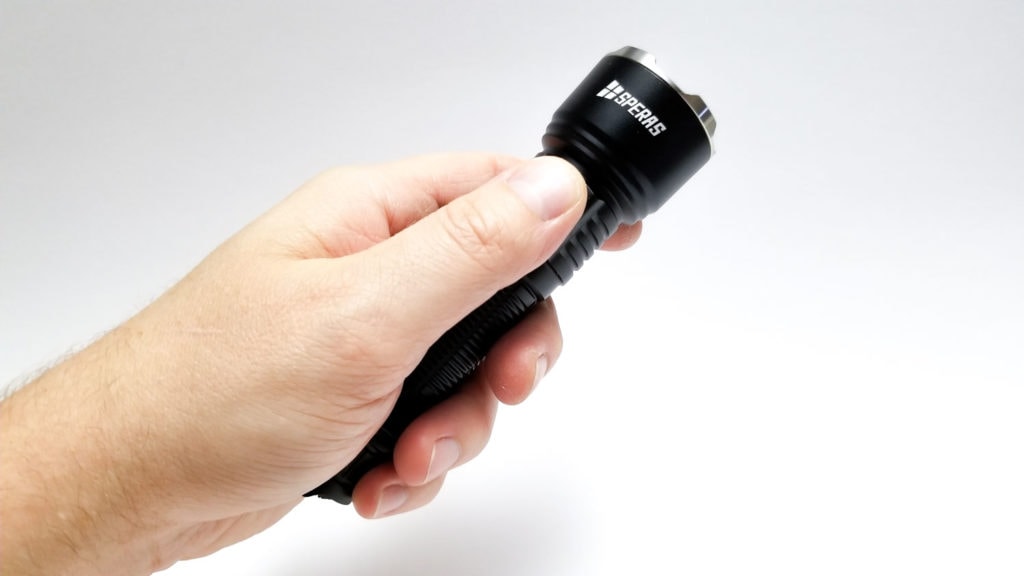
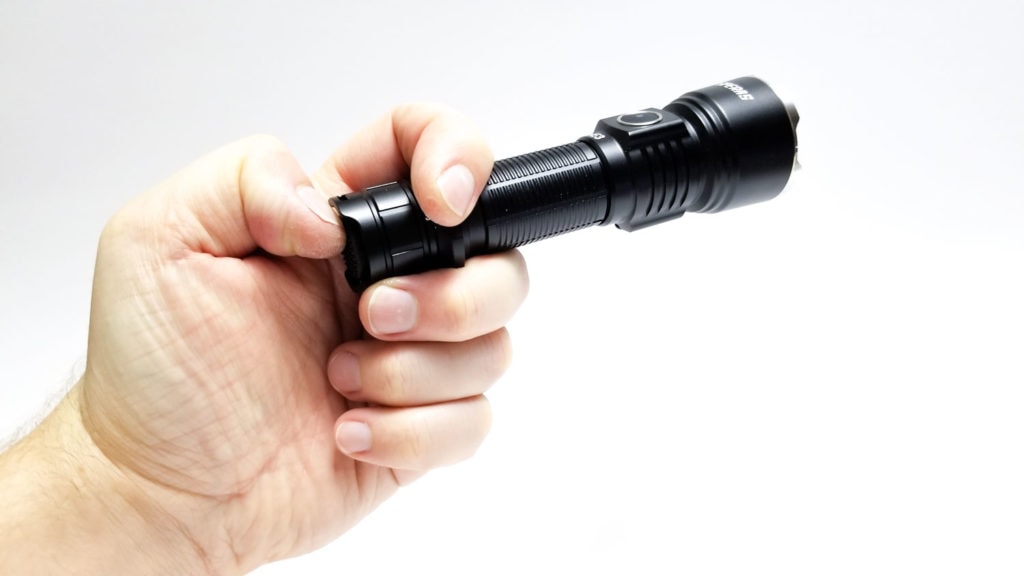
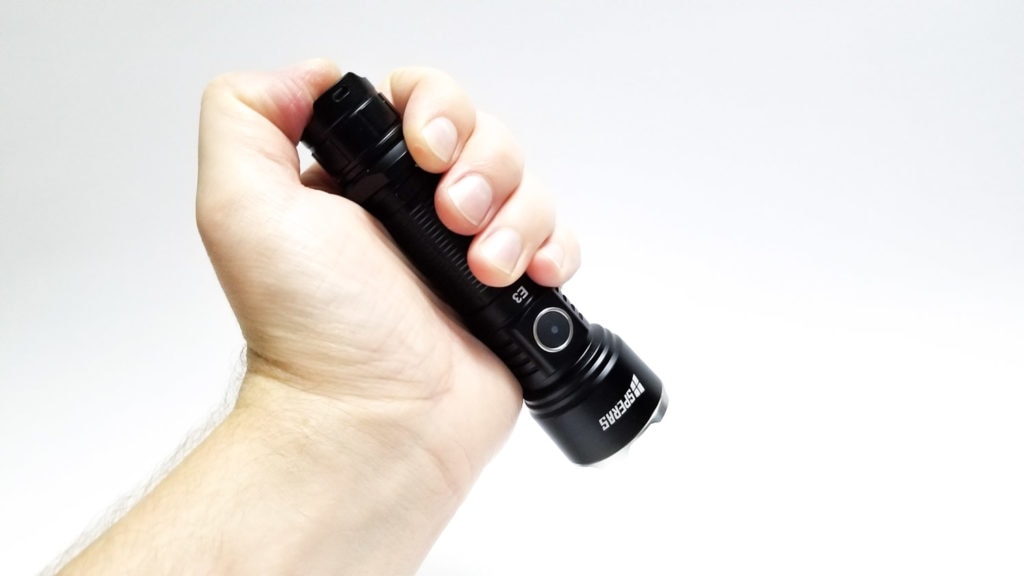
Build Quality, and Warranty
Time for a reality check, folks. “budget” lights are getting better and better and this has resulted in a bit of an impasse of late in my reviewing experiences. The difference between quality brands and budget brands shrunk, and you are getting more and more for your money. That said, Speras prices the E3 somewhere between an Acebeam L17, Fenix PD35, Nitecore P20UV V2, and Olight Warrior 3. I couldn’t find the E3 on sale in the USA (yet), but it will probably land somewhere around $80. Not a budget light, but not super-expensive either.
The E3 is made from 6061-T6 aluminum alloy, and I will say the build quality is totally acceptable, with good machining, no sharp edges, and all the parts fit together okay, with the exception of the tactical ring. It isn’t captured or friction fit, so it spins freely and can rattle around due to the +/- 2 mm gap between the tailcap and lip on the battery tube. It’s kind of sloppy and I’m not sure why Speras left it this way. Maybe to help in keeping a lanyard from getting tangled?
Every edge seems to be chamfered and beveled (even the edges of the charge port). However, the finish on the stainless bezel was not good at all, with some very obvious finish defects. The lens and reflector were clear of errant particles and debris though. The finish is type III HA, and it seems reasonably stout and the coverage is excellent. It’s a semi-matte finish for sure, but not as nice as Acebeam, Cyansky, and Convoy finishes. Speras says the E3 is good for a generic IPX8 rating, and there’s o-rings in all the right spots.
Sorry modders: The bezel and head are sealed with glue or Loctite, which is fine given the target audience. The threads are square cut and stout with plenty of thin lube out of the box. They were pretty smooth once I overcame the stout tailcap spring and got them started. The driver’s positive contact sports a pretty thick gold-plated spring also, which should help durability if the E3 ever finds itself conscripted for weapons duty (Speras sells remote switches and long gun mounts for the E3).
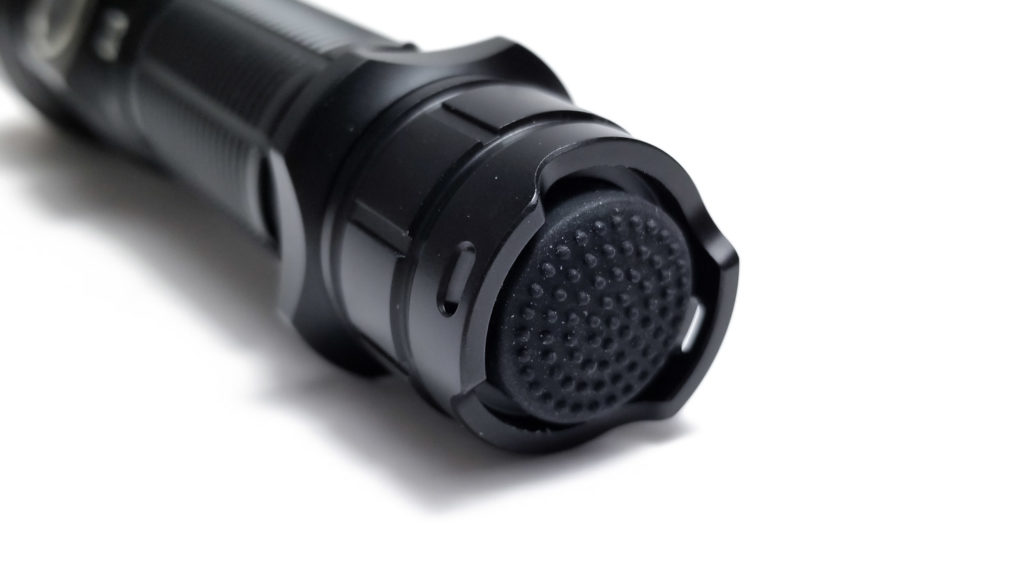
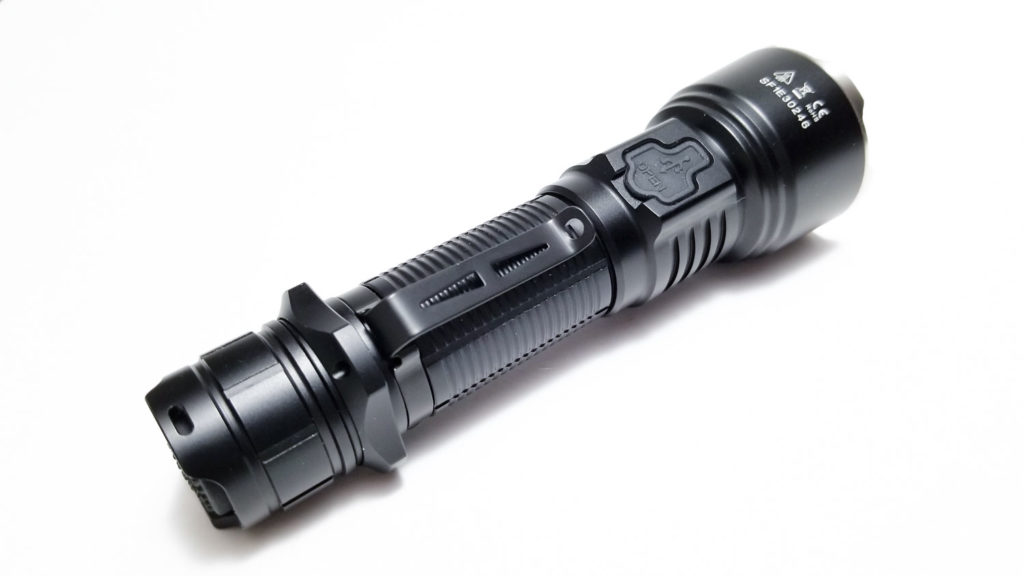
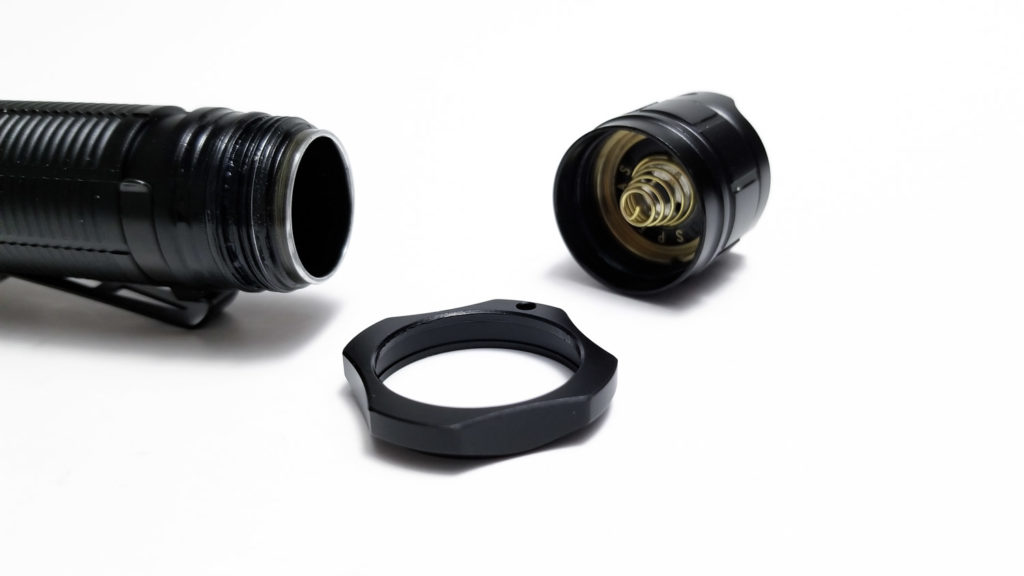
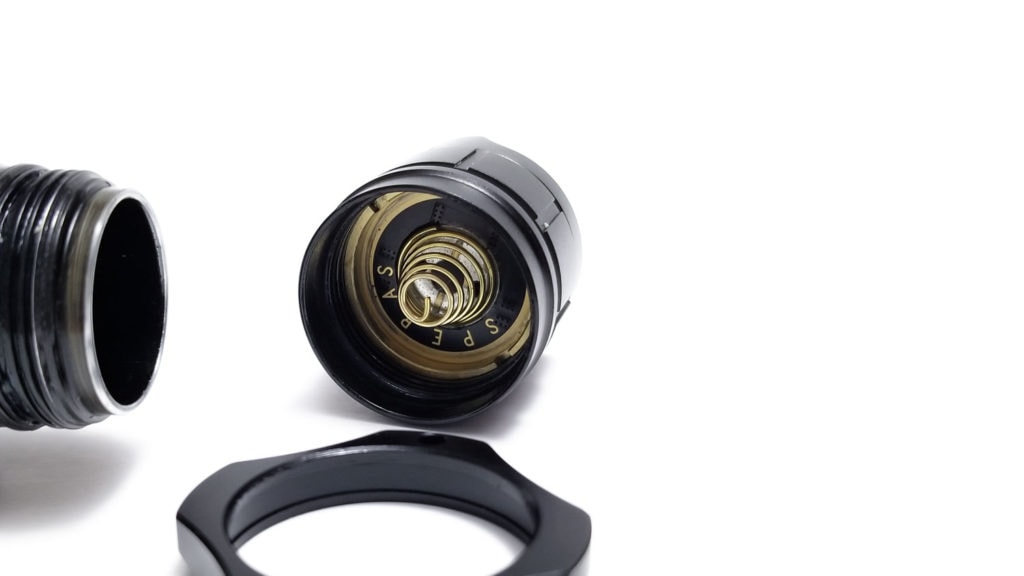
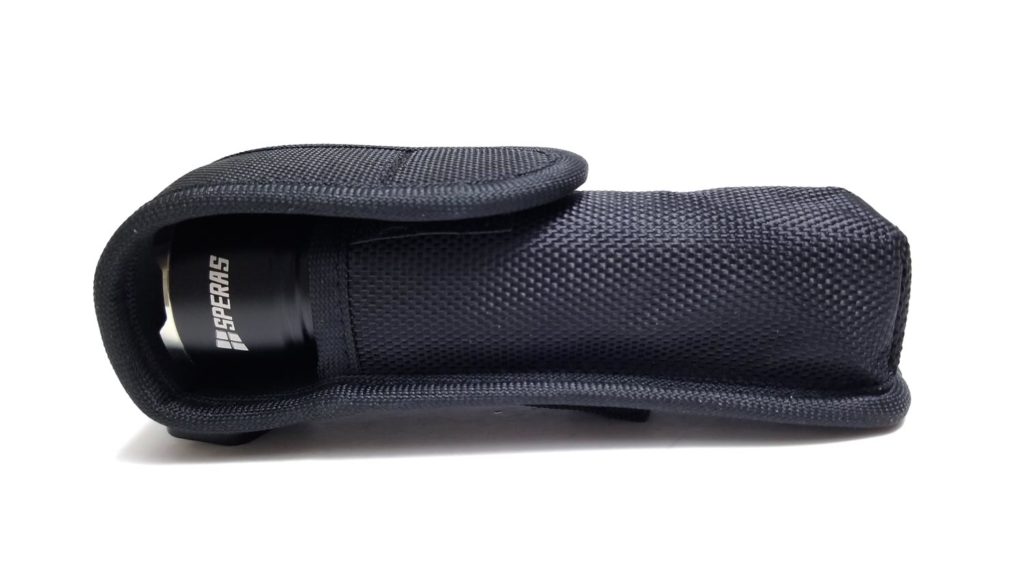
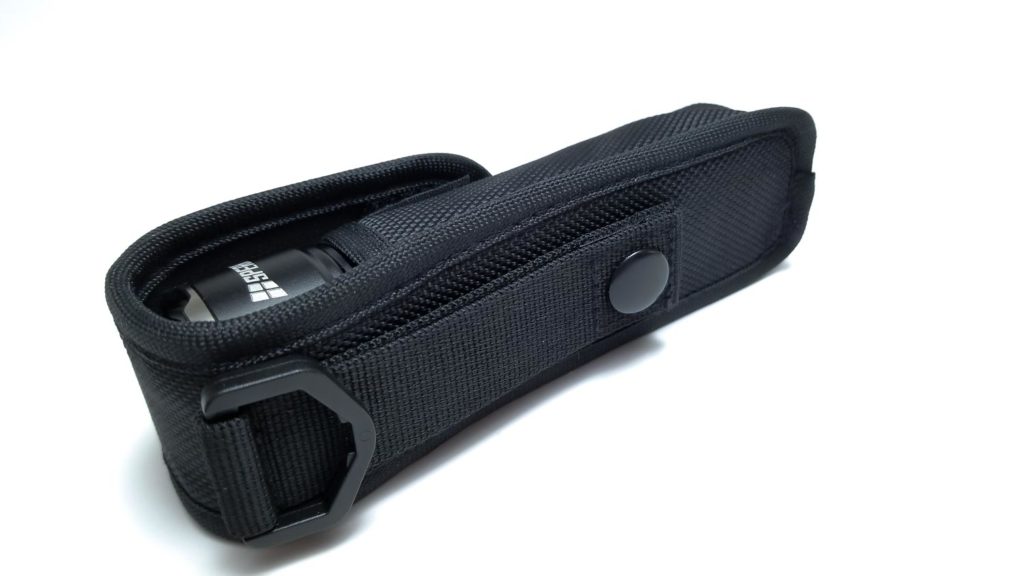
LED, Lens, Bezel, and Reflector
The E3 features the Osram P9. I don’t have much experience with this LED, but it has seen more and more use over the last couple years in Wuben and Olight products. P9 is not the official Osram designation, and we all know Osram has unique naming conventions for their LEDs. The official Osram designation for this one is (ready?) GW PUSTA1.PM.
This LED is part of Osram’s OSCONIQ lineup of 3 volt high performance white (2700k to 6500k, low CRI) LEDs on the 3737 footprint (3.7 x 3.7 mm). These are a domed emitter and Osram rates these for 3000-4000 mA max current. I couldn’t find any information on the LED size, but it looks similar to a Cree XP-L, and the slightly larger footprint should help thermal performance. The P9 in the E3 is definitely cool white, and the Opple Lightmaster showed roughly 6500K and 70 CRI. It’s perfectly centered in a flawless SMO reflector behind a hardened mineral glass lens with an unobtrusive AR coating.
The bezel is stainless steel with nice crenulations that will help protect the lens and help potentially protect you since they’d be a nice force-multiplier or glass breaker if needed. The aforementioned machining quality on it is a let-down though. The beam is about the same as a C8 with an XP-L, with wide, generous spill and a defined hot spot. Interestingly, there’s some visible corona on a white wall, but not nearly as bad as an XP-L2 or XHP50.2. The beam will be great for general purpose use with nice throw and spill. If you need to light up things farther away, grab an Acebeam L17 or Cyansky K3.
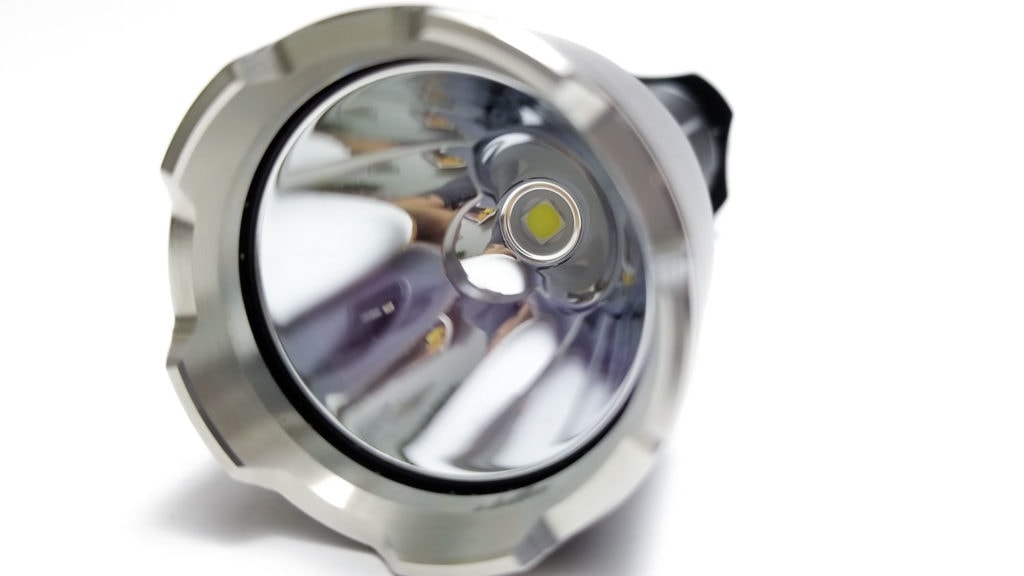
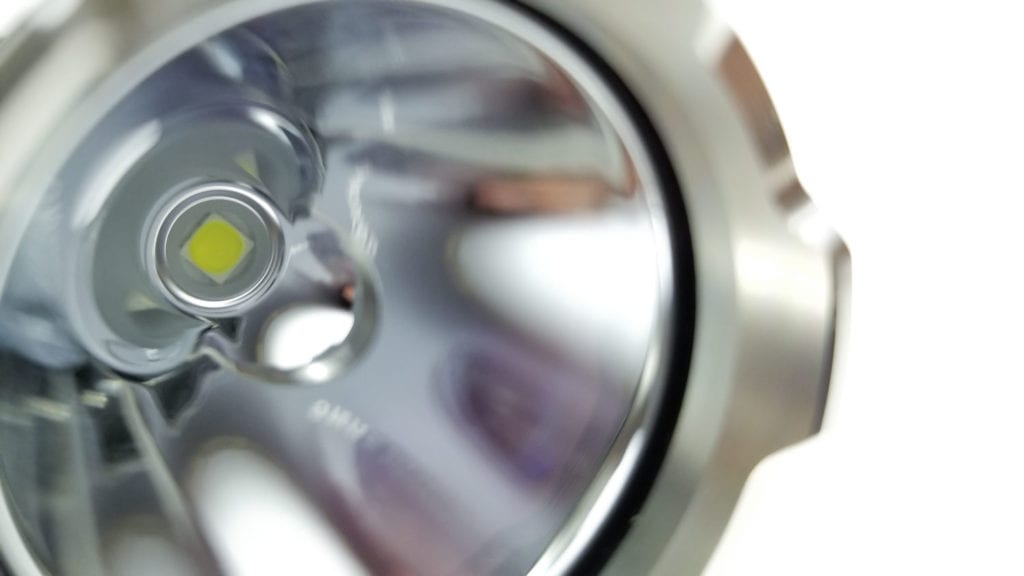
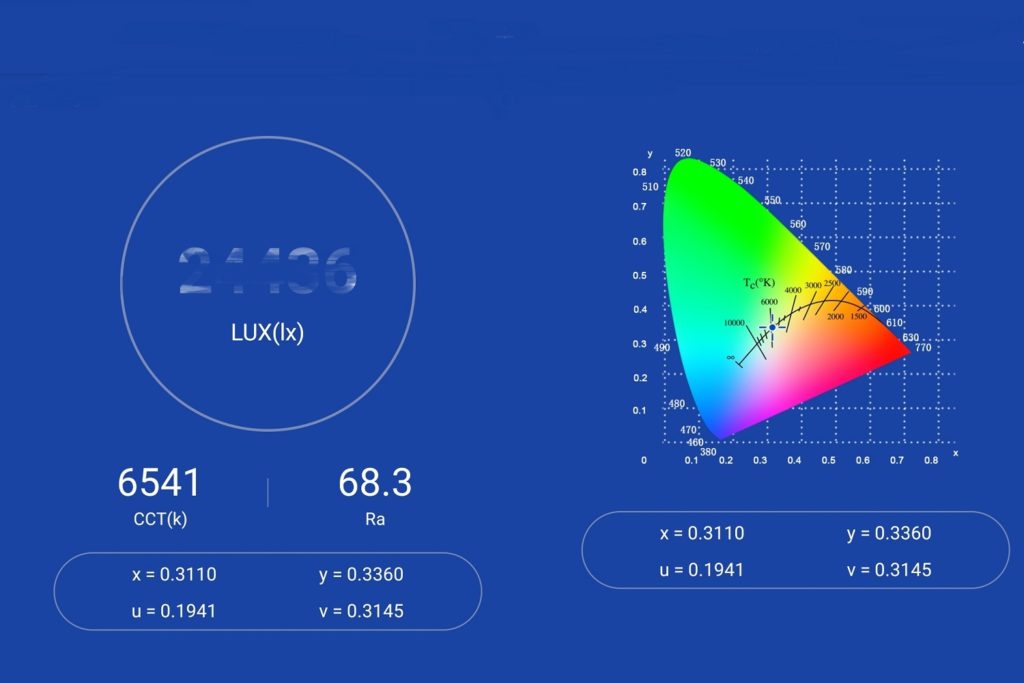
Dimensions and size comparison
- Length: 13.7 cm / 5.39 inches
- Head diameter: 4 cm / 1.57 inches
- Body diameter: 2.54 cm / 0.98 inches
Weight:
- Without battery: 126.2 grams / 4.4 oz.
- With included 18650 battery: 176.7 grams / 6.2 oz.
Tactical Flashlight comparison
I compared the E3 to some other (true) tactical and tactical-use lights:
Group 1 left to right: Cyansky K3, Speras E3, Fenix TK16 V2, Acebeam L17.
Group 2 Left to right: Fenix PD36 TAC, Olight Odin, Olight Odin Mini, Speras E3.
Group 3 left to right: Speras E3, Thorfire C8.
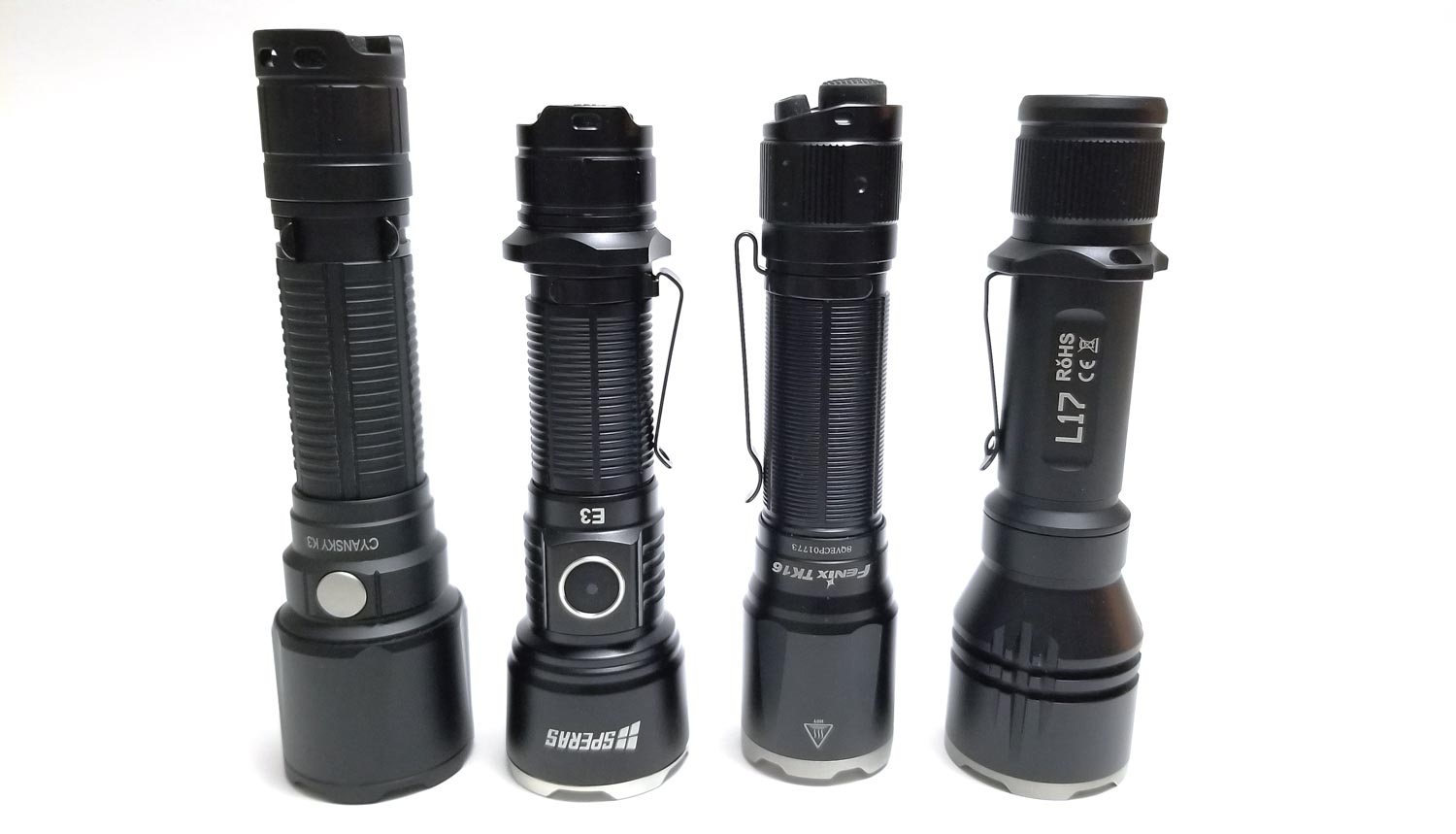
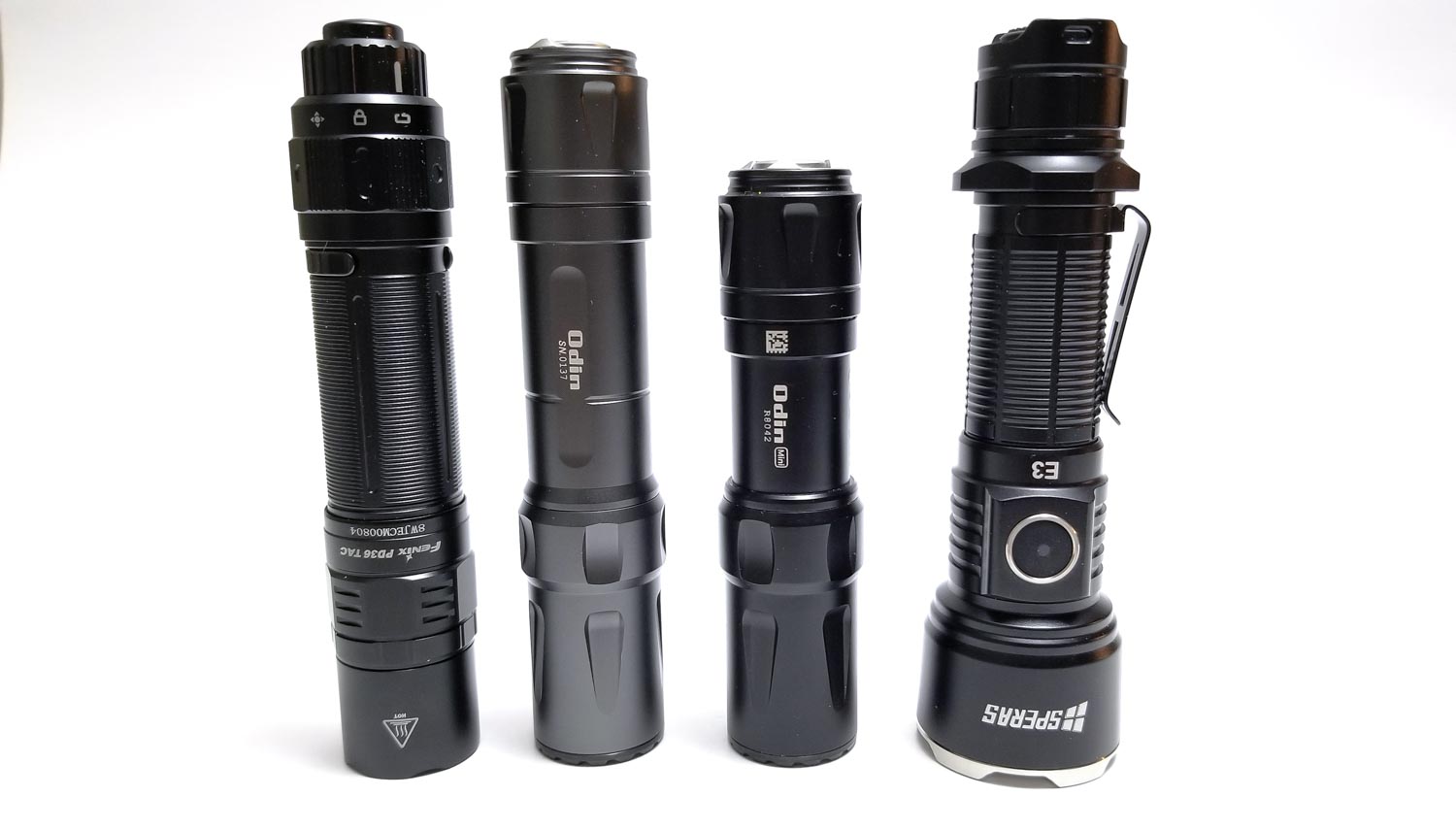
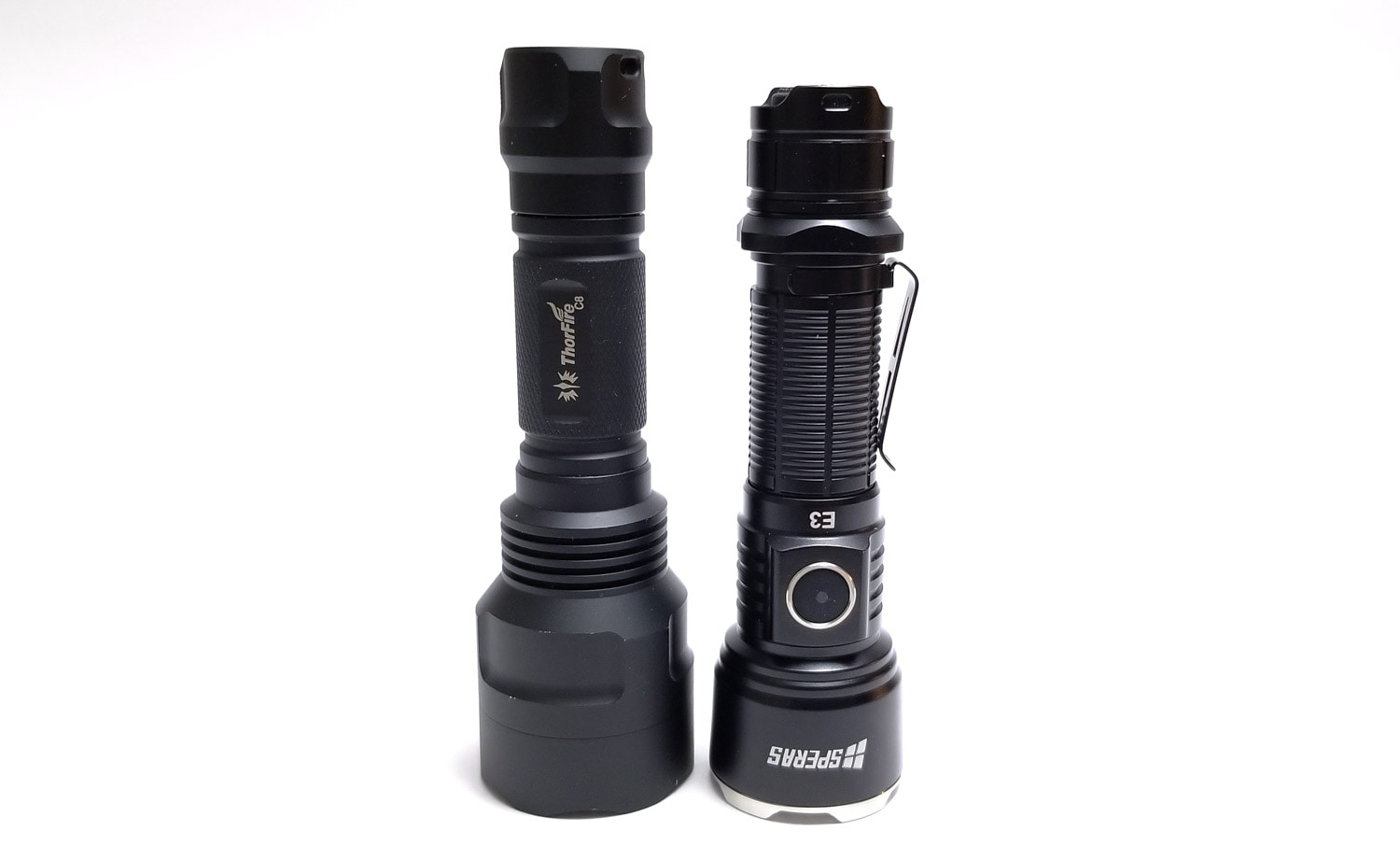
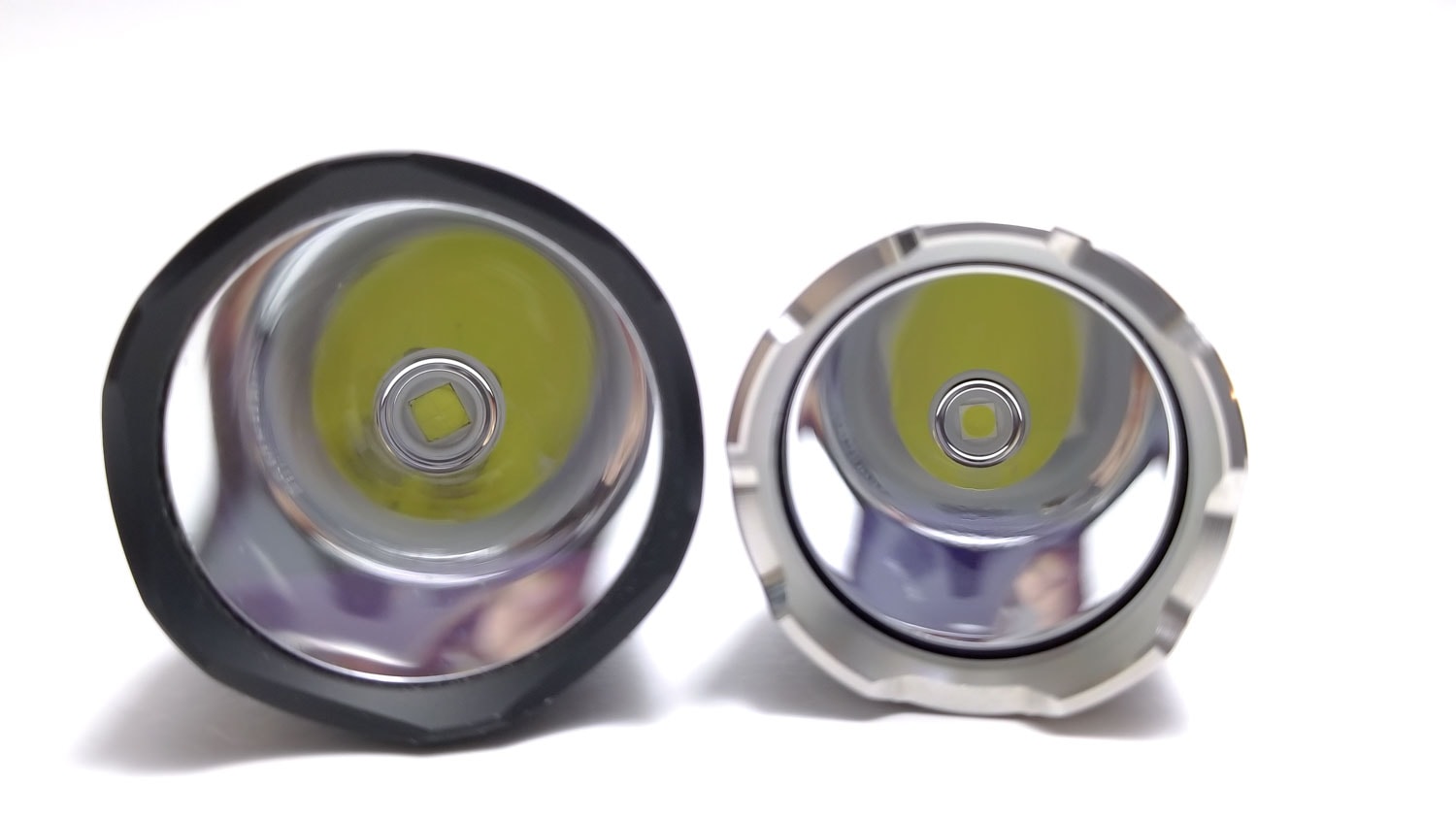
Driver & User Interface:
This is where the price increase starts to make more sense because the E3 is fitted with a constant current buck driver. It’s paired with a simple user interface designed for professional-use lights. Buck, boost, and buck/boost drivers are superior to FET drivers because they can regulate the output in a laminar fashion as the battery drains. Paired with Speras’ version of ATR, this means really consistent output (yep, I’ll test that).
The user interface is really simple with 4 regular modes plus a variable strobe and SOS function. You need to activate the rear switch before the light turns on, which is good for tactical-type use or signaling. Modes are changed by pressing the side switch. You won’t find any fancy UI’s here, which makes sense. I’ve said it before, and I’ll say it again: There’s no place for them on professional-use lights.
Available modes: Eco, Low, Medium, High, double-click for strobe, and double-click again for SOS.
From OFF:
- Single click rear switch: Turns on in last mode
- Single click eswitch: N/A
- Double-click eswitch: N/A
- Triple click: N/A
From ON:
- Single click rear switch: Turns off
- Single click eswitch: Changes to next mode
- Double click eswitch: Strobe (double-clicking in Strobe activates SOS)
- Triple click: N/A
Mode memory:
- Yes
Shortcuts:
- Double-clicking the e-switch in any mode activates strobe
Low voltage warning:
- Yes, the indicator switch will show solid green for >70%, orange for 70%-30%, <30% red, <10%, flashing red.
Strobe/blinkies
- Variable strobe, SOS
Lock-out mode:
- Nope. Manual lockout by unscrewing the tailcap 1/5th turn
PWM
- Yes on Moon, Low, and Medium, but fast PWM not visible to the naked eye.
Additional info on the UI:
The Speras E3 UI digresses somewhat from its tactical nature, omitting instant access to strobe and Turbo/High modes. In true tactical form, these are mandatory for a tactical light. It also adds mode memory, which is another addition that distances it from the true tactical crowd. To be fair though, it omits electronic lockout, and I think it’s good enough for a duty or general purpose light with features that would appeal to a professional user. The UI is simple, intuitive, and works fine with manual lockout.
Batteries & Charging
The Speras E3 is designed around the 18650 lithium-ion cell, but like other professional lights in this class, you can substitute 2 CR123A lithium primary cells also. This would appeal to police, fire departments, and other agencies who buy masses of CR123A cells (ain’t nobody got time for rechargeable batteries).
For the rest of us, Speras bundles the E3 with the R34 3400 mAh cell with integrated micro USB (boooooo) charging. You aren’t limited to this battery though, and you can use any 18650 you want in the E3 as long as it fits. I tried using a flat top Sony VTC6, and it fit fine, as did a 70 mm long Acebeam protected cell with integrated charging. Although it’s nice to have 2 methods of charging (actually, 3 since the included battery can be charged in a lithium-ion charger as well).
In addition to the cell’s integrated charging, the E3 has onboard USB type C charging. On my USB tester, the charge current was around 1 amp on both the integrated charging and the onboard charging. This is definitely not fast charging, but should top off the cell in about 3.5 hours, and it did. The switch indicator is red while charging, and turns green when finished. A word on that…the charging algorithm is identical to the one I encountered on the Brinyte HL16 wherein the indicator turns green to indicate fully charged when the cell really isn’t. The USB tester showed charging continued at 250 mA for over an hour before reading 0 mA. I pulled the cell and a voltage check showed 4.21 volts. A little high, but not dangerously so.
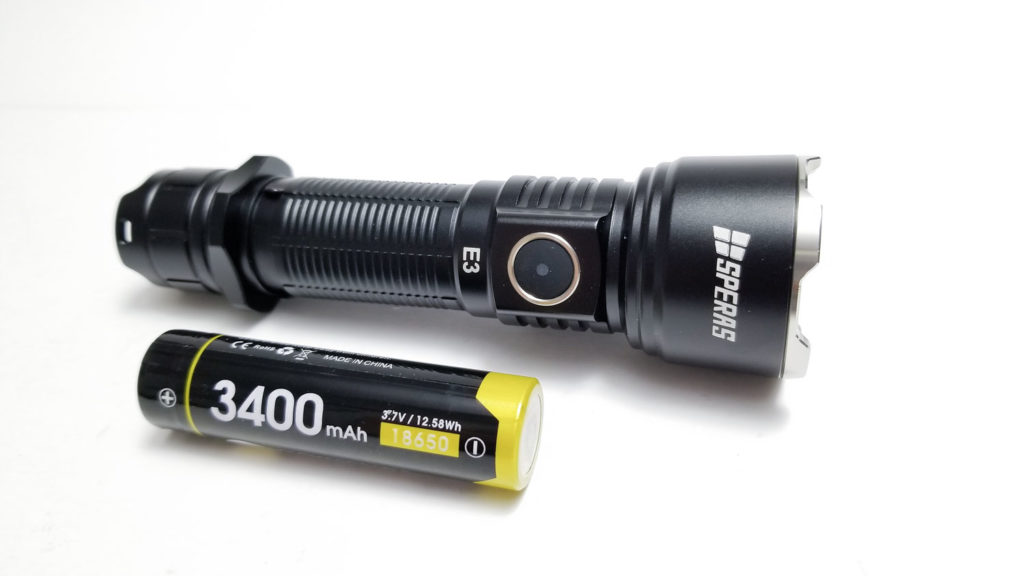
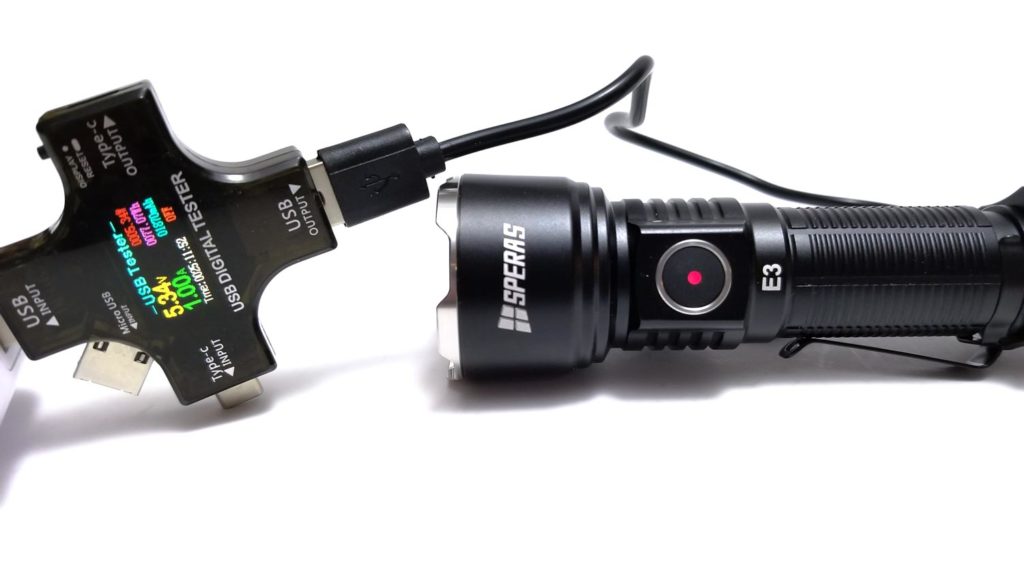
Performance
Lumen measurements (for each mode)
I measured Lumens using my 30 cm integrating sphere with a Digi-Sense 20250-00 data logging lux meter that’s been calibrated with several lights of known output. Tests were conducted using a fully charged included R34 3400 mAh 18650 cell. Amps were measured using my Radio Shack TRMS multimeter with short 16 gauge wires inserted directly in the meter.
| Mode | Amps at start | Specs | start | 30 sec | 10min |
|---|---|---|---|---|---|
| Eco | 15 mA | 10 | 5.18 | 5.18 | 5.18 |
| Low | 151 mA | 100 | 81 | 81 | 81 |
| Medium | 650 mA | 400 | 340 | 340 | 333 |
| High | 3.63 A | 1300 | 1198 | 1191 | 770 |
The P9 isn’t being driven very hard, and that’s good for long runtimes and less heat in the light (and your hand).
Parasitic drain:
- 2 microamps (nice!)
Runtime graph
Runtime tests were conducted using the 30 cm integrating sphere with the Digi-Sense 20250-00 data logging lux meter calibrated using several lights of known output. I used the fully charged R34 3400 mAh 18650 battery for each test and tested Low, Medium, and High modes.
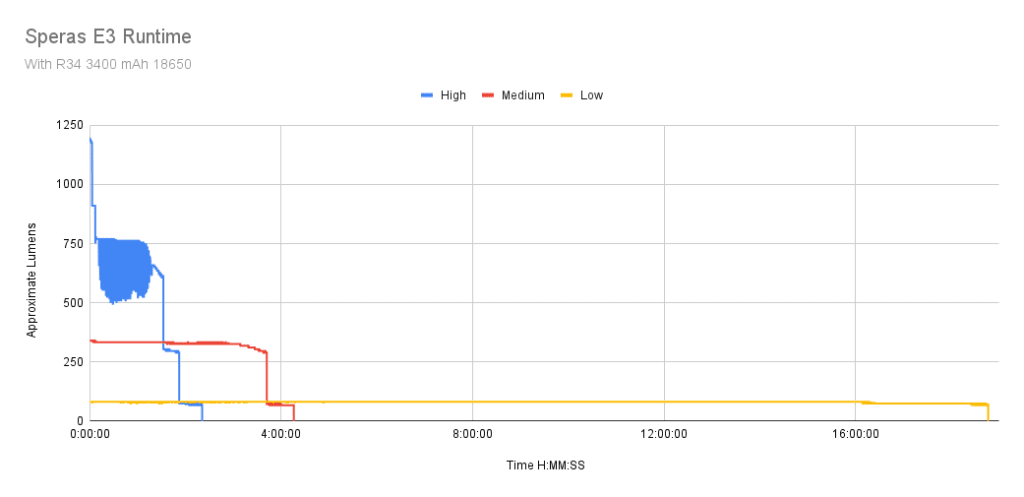
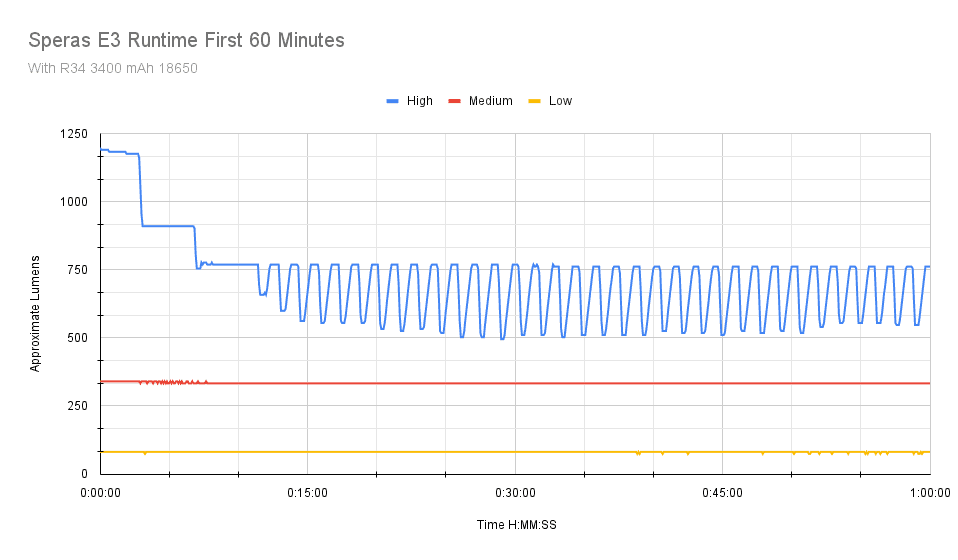
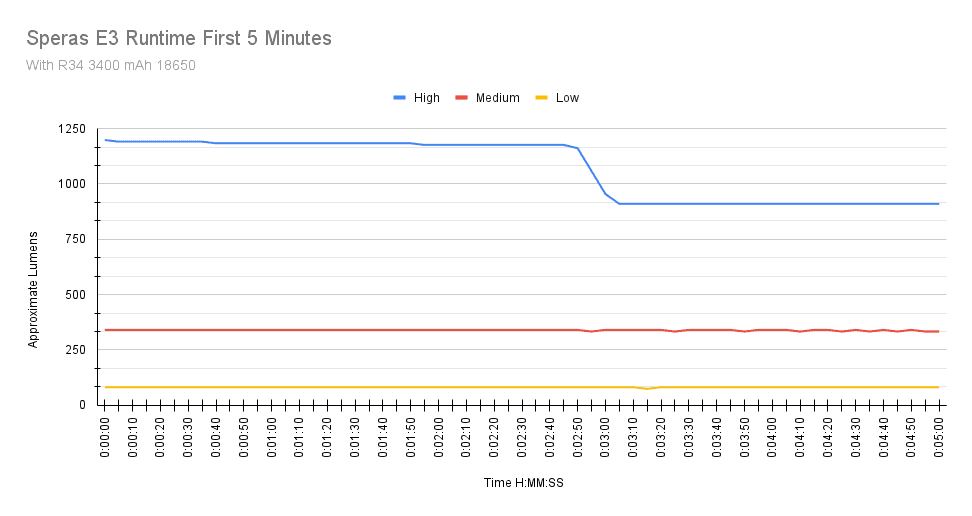
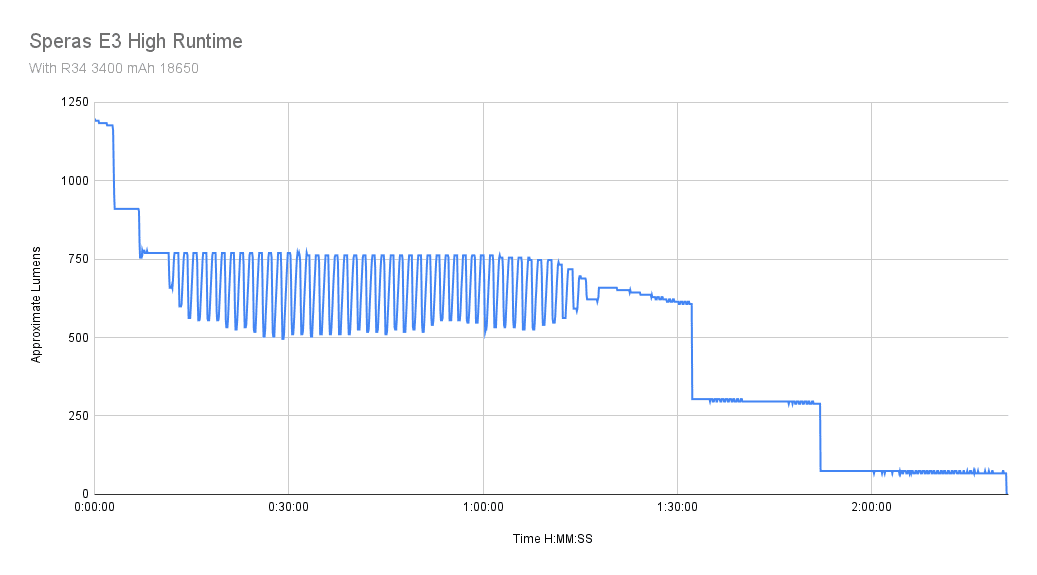
High started close to 1200 Lumens, and it didn’t drop much in the first 3 minutes. Speras doesn’t specify a timed step down, but there is one and it happened at 2 minutes 55 seconds. From there, the output stayed very stable around 900 Lumens for another 4 minutes, then another step down at 7 minutes to a hair under 800 Lumens. Temps were under 50 C the entirety of the runtime, so it’s safe to hold with bare hands. Around 11 minutes in, the ATR kicked in and we get a sawtooth pattern as the light regulates the output based on temperature. This is a mirror-image of an ATR algorithm used in early Sofirn lights, Wurkkos, and Fenix lights. It looks bad, but the changes are so slight you don’t notice them with the naked eye. This lasted for about an hour and 15 minutes, then the output turned laminar, stepping down to around 300 Lumens, then down to 74 Lumens at 1 hr. 52 minutes as LVP kicked in. The red switch LED had begun flashing about the 1 hour 15 minute mark. It stayed at this low level for another 40 minutes before the output dropped again (0ff the lux meter scale) and I ended the test at 2 hours 20 minutes. Speras runtime spec is 120 seconds (for the timed step down) plus 1.5 hours, so a nice 1 hour 32 minutes total. Obviously, I got a whole lot more which is always welcome. The battery read 2.98 volts after the test.
Medium started at 340 Lumens and was very stable the entirety of the useful brightness, keeping at or above 300 Lumens for over 3 hours 30 minutes before a slight (imperceptible) step down to 280 Lumens. The output fell off the cliff at 3 hours 41 minutes as LVP pulled the plug. I let it run for 45 minutes at the low reading before it stepped way down off the lux meter scale at 4 hours 15 minutes and I ended the test. The light didn’t heat up much, staying under 33 C the entire test. Spera’s runtime figure? 4 hours on the nose. Not bad.
Low was a similar performance to Medium, very linear output as the buck driver sipped electrons from the battery. The test started at 81.4 Lumens, and it didn’t change much for the next 16 hours, hardly wavering until 16 hours 22 minutes with a slight (and barely noticeable) step down to 74 Lumens. It ran like this for another 2 hours and 22 minutes until LVP pulled the output to about 1 Lumen (still on the lux meter scale) at which point I ended the test. Total time was 18 hours 46 minutes. It did not heat enough to make a difference, staying at near ambient temperature. Speras specs the runtime for Low at 18 hours.
What did we learn? The P9 is not being driven very hard and coupled with the buck driver, you get long, consistent output. This is where the price disparity between something like a Sofirn SC31 Pro and this light makes sense. A professional user needs constant brightness while on the job, and that’s what they would get. It also doesn’t get burning hot during extended runtimes even on High. Last I checked, I don’t like holding hot objects and I’m sure the general populace would concur. The E3 would be in its element with a diffuser cone (Speras sell those too) stuck on the bezel for traffic or crowd control, or wielded by a security guard on graveyard shift or an inspector clamoring around in dark spaces.
Throw numbers:
Throw was measured at 5 meters indoors using the Uni-t UT383S lux meter. I used the fully charged included R34 18650 battery for the test. Readings were recorded at 30 seconds.
| Mode | Specs | Candela measured | Meters |
|---|---|---|---|
| Eco | 236 cd | 125 cd | 22 |
| Low | 2361 cd | 2475 cd | 99 |
| Medium | 9446 cd | 11,125 cd | 211 |
| High | 30,700 cd | 39,025 cd | 395 |
The throw is great! This is about what I expected, and it’s always nice to beat factory numbers. The throw is comparable to an XP-L equipped C8 driven to about 3.1 amps (off an 8 x 7135 driver). The E3 can put light exactly where the operator needs it with good accuracy and coverage at distance.
Beamshots
I tested the E3 against some tactical and semi-tactical “duty” lights: Fenix TK16 V2 (3100 Lumens SST70, 400+ meters throw), Fenix PD36 TAC (3000 Lumens SST70 300+meters throw), Cyansky K3 (SFT40-W 1600 Lumens 700 meters throw), Olight Odin (2000 Lumens, 300 meters throw), Thrunite BSS V4 (2500 Lumens SST70 250 meters throw). I threw in an old generic C8 with SST40 for comparison.
Indoor shots: The end of the first hallway is 7 meters away.
Outdoor shots: The fence is 95 meters away. The water tower is 90 meters away. I compared the E3 to the TK16 V2, Cyansky K3, and generic C8 with SST40.
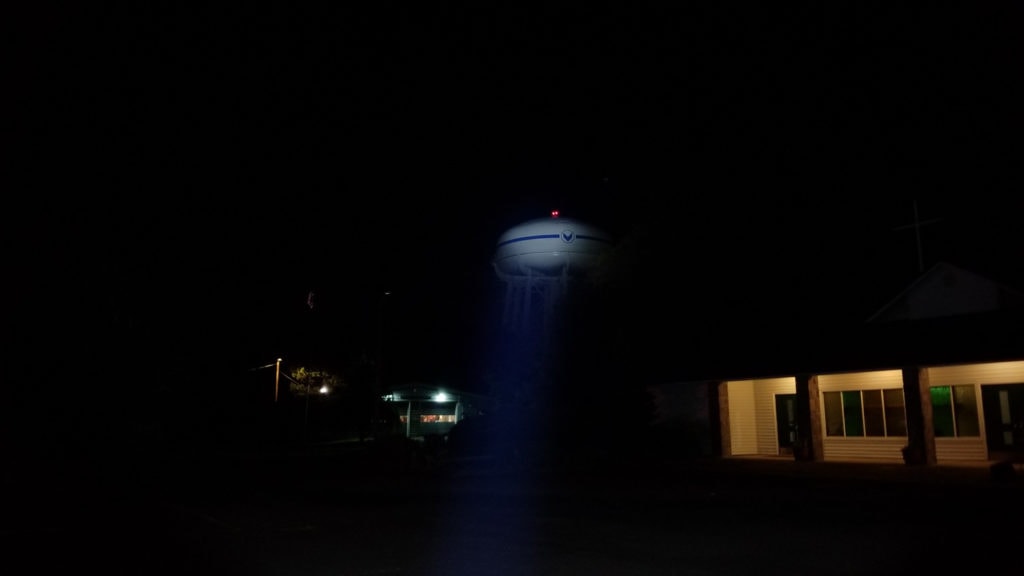
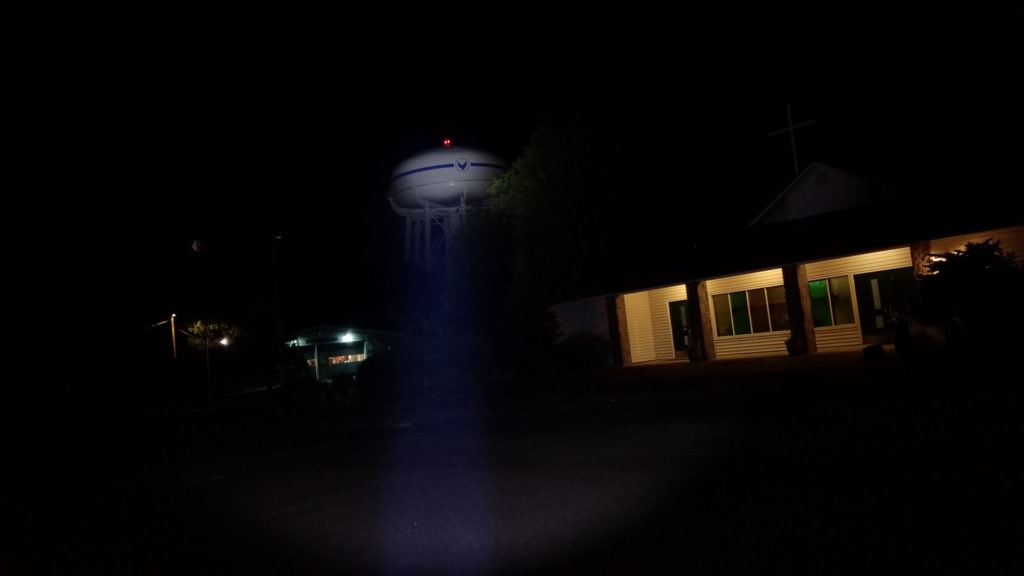
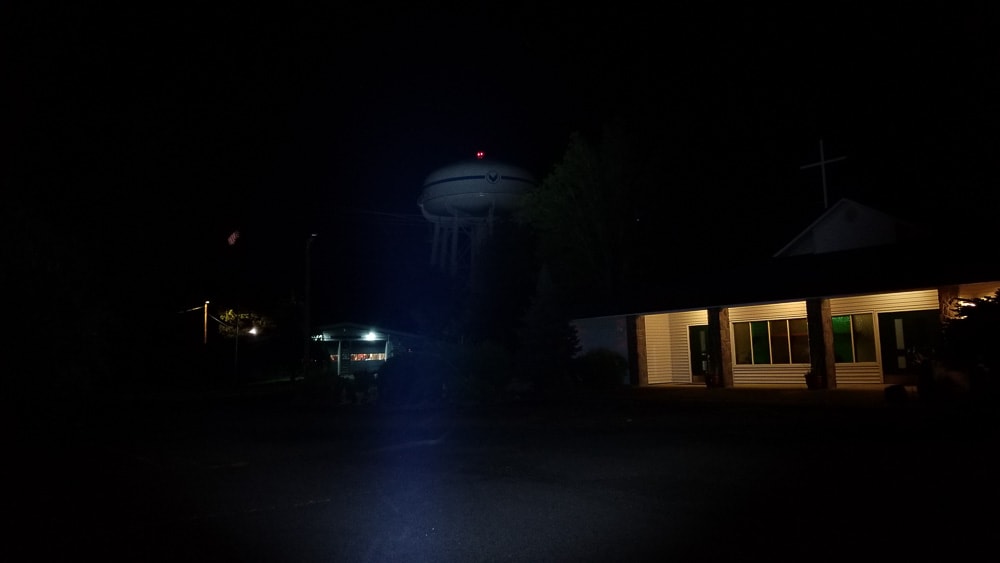
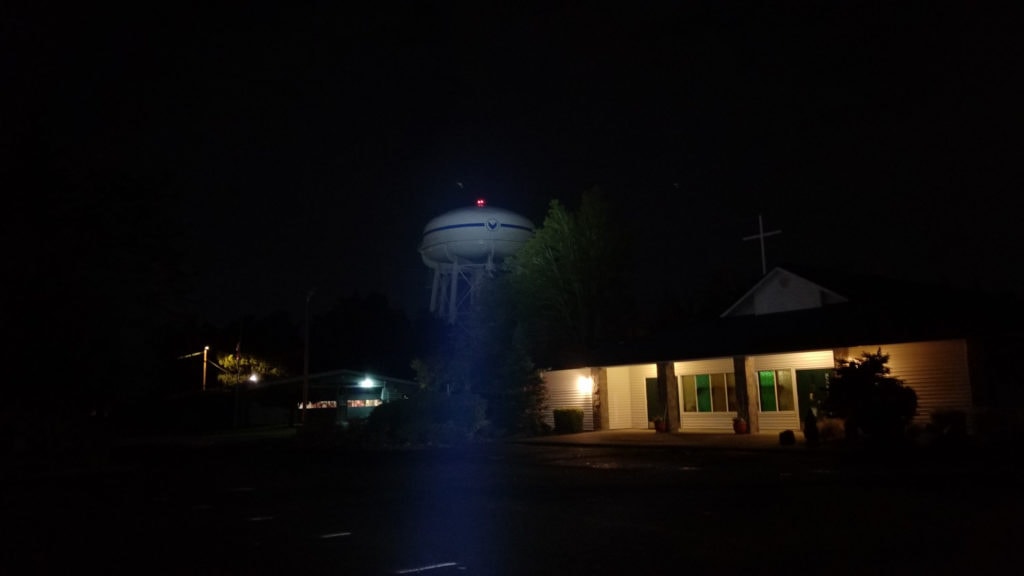
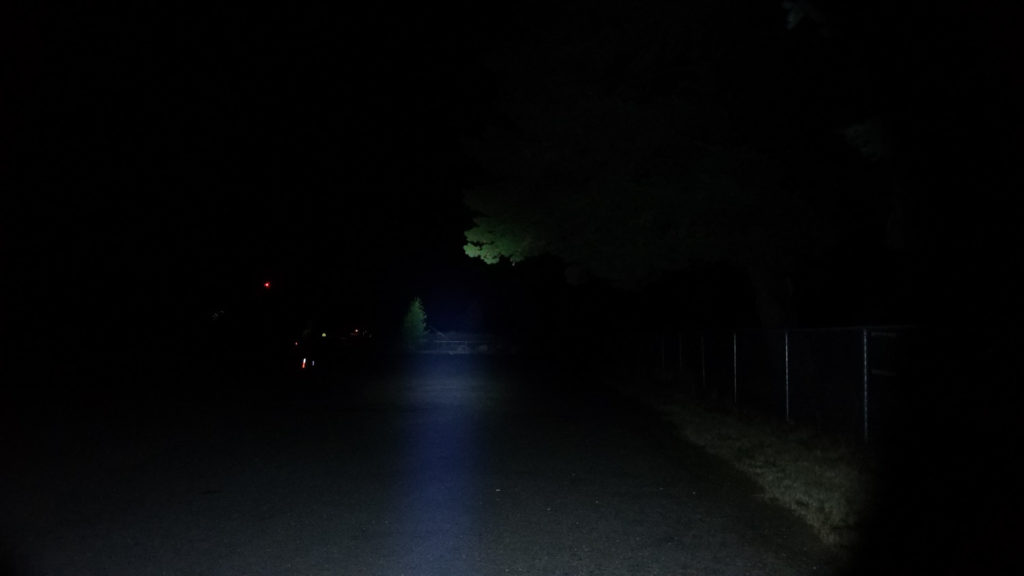
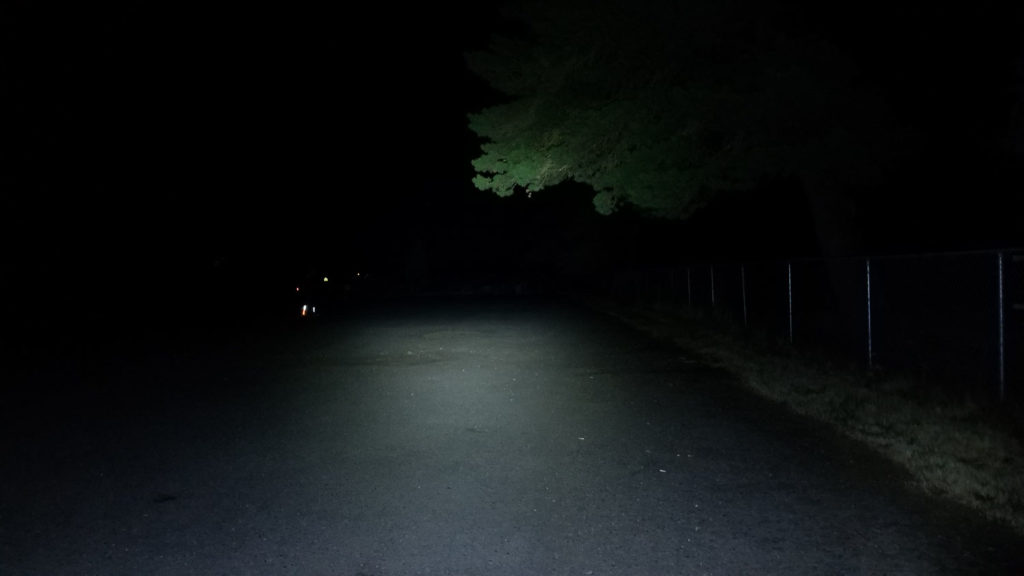
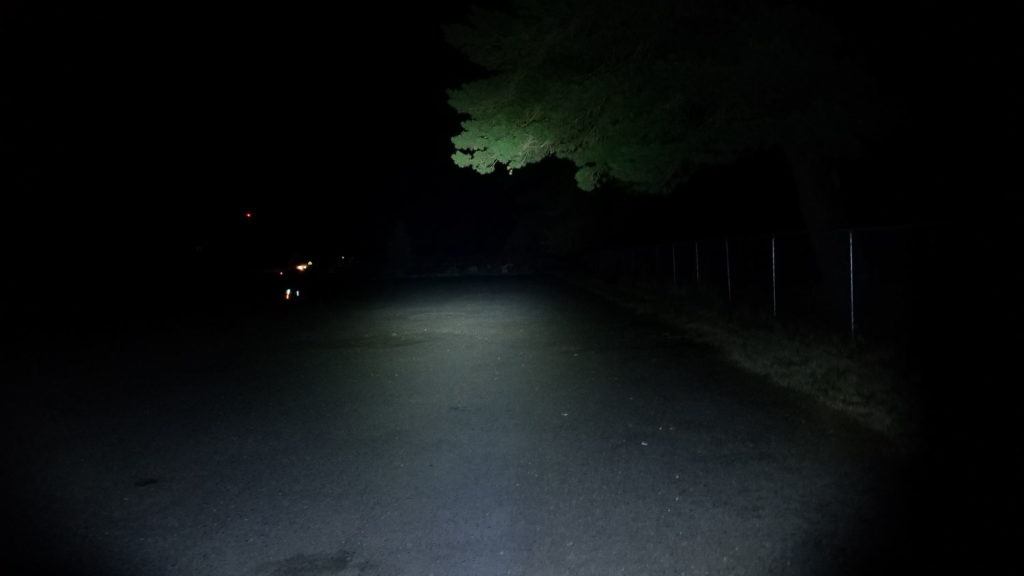
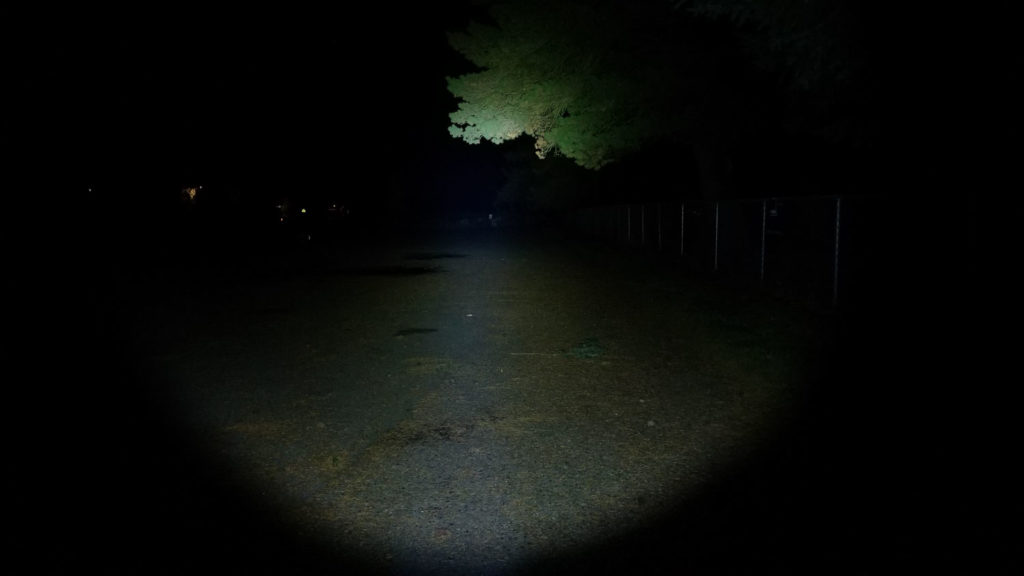
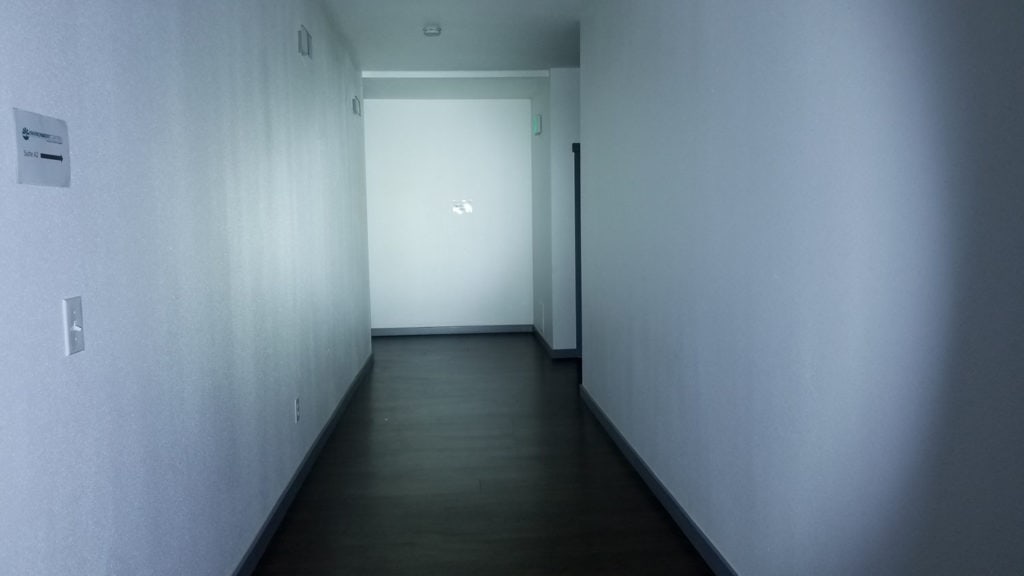
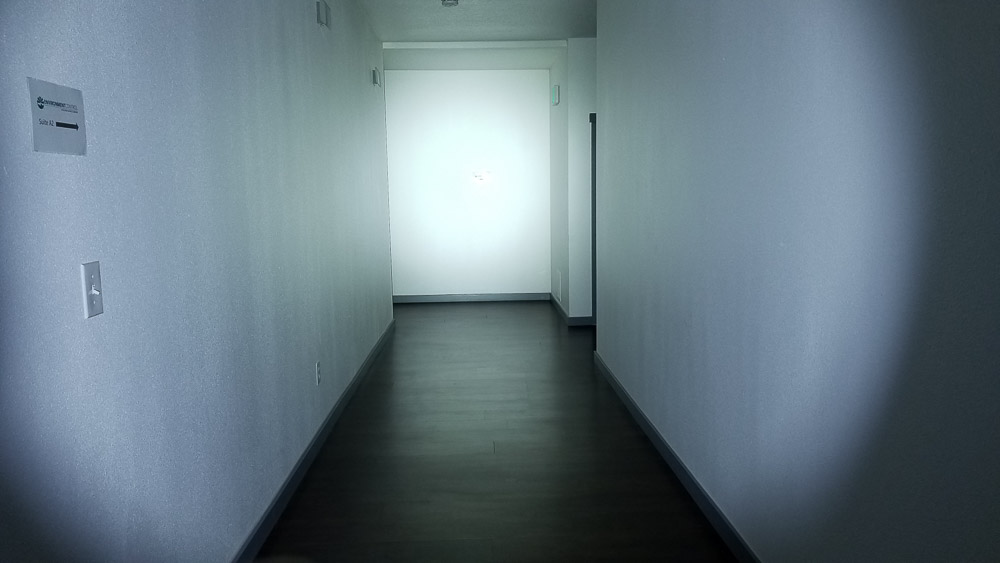
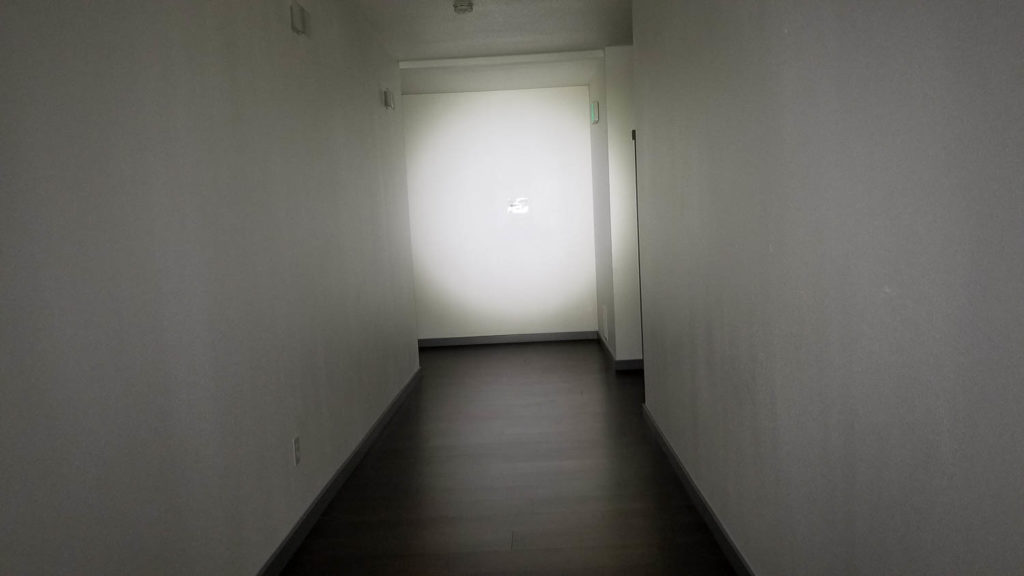
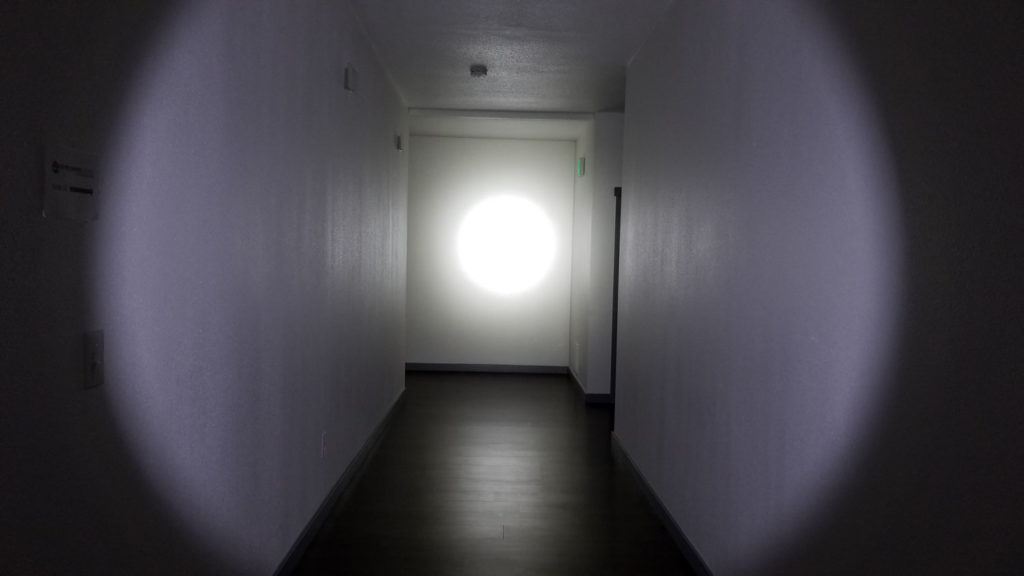
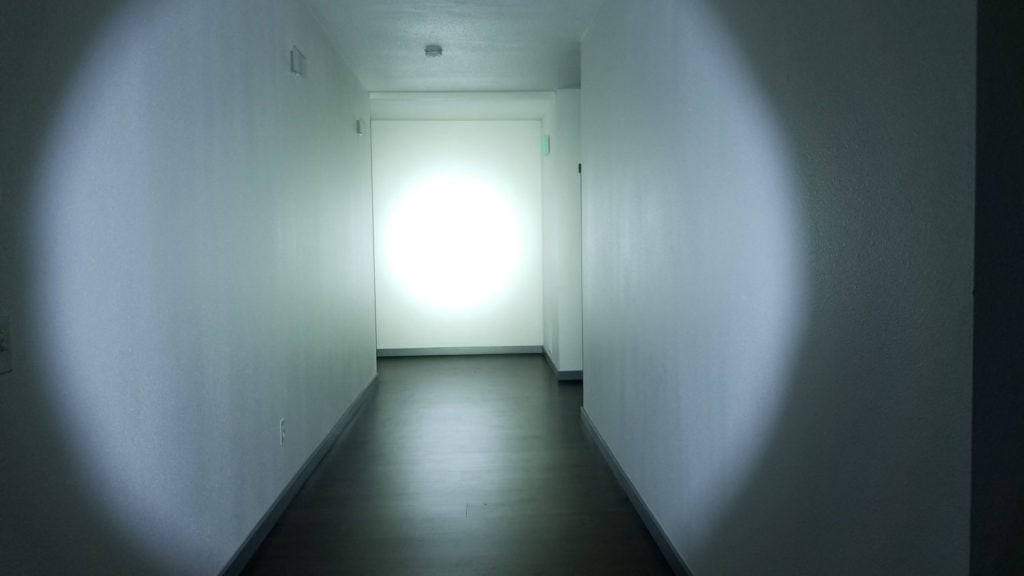
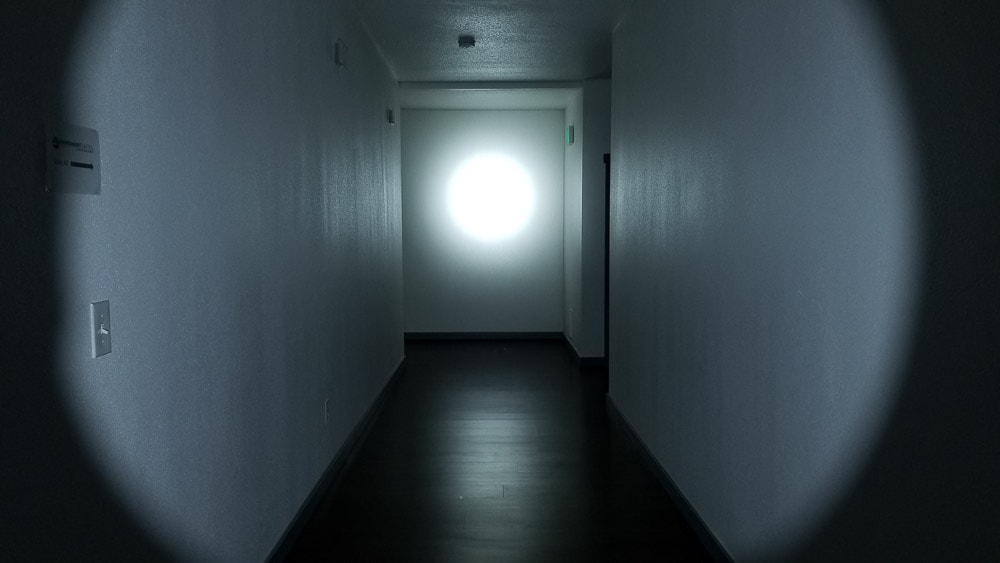
Disclaimer: This flashlight was sent to me for review at no cost by Speras. I have not been paid to review, nor have I been holding back on problems or defects.
Final Verdict
Pros
- Constant current buck driver
- Simple UI
- Good throw
- Versatile beam
- Onboard USB type C charging
- Consistent, long runtimes
- Can use CR123A cells
- Non-proprietary battery
Cons
- Some finish defects
- No instant access to Turbo/High or Strobe mode
- Charging indicates full battery when 90% charged
- Down on output compared to the competition
Explanation on star ratings:
1: Avoid: my phone flashlight would be a better choice – 2: Poor: significant defect or issues, much better options available at the same price – 3: Average: some defects or issues – 4: Good: recommended (minor issues) – 5: Great: highly recommended

4 stars: ★★★★
Okay, I need to get these off my chest. People, a true tactical light is not those 9000 Lumen advertised zoomies sold in every nook and cranny of the interweb. Second, the tactical light market is full of options, so it can be a fatiguing process to sort through the mess and find a good tactical or tactical-use flashlight that fits your needs. Luckily, this means there’s a lot to choose from, and I think Speras has come into the fray at a good time with the E3. Although it’s not remarkably different or new, it’s a solid choice with good features. I like the redundant charging and retention options, versatile beam with good throw, and buck driver.
I also like that I can use any 18650 battery that fits. It feels nice in the hand, and the long, fully regulated runtimes are fantastic for professional use. Moreover, the runtimes and Lumen outputs are very close to advertised, so you know what you’re getting before buying the light. That said, it falls short in some key areas that distance it from the competition a bit.
It’s missing instant access to High and Strobe mode, and although I like the included high capacity 18650, 21700’s are the future. The loosey-goosey tactical ring seemed out of place, and in my opinion, there shouldn’t be blemishes on a $80 light. Lastly, although 1300 Lumens is nothing to thumb your nose at, the competition is sporting 1800+, 2500, and even 3000+ Lumens. It begs the question why you’d buy the Speras unless you don’t need the higher output. 4 stars for the Speras E3 and a solid choice for a professional-use duty light.
Speras E3 For Sale
You can get in touch with them to buy one. They don’t have a store yet.
1lumen selects and reviews products personally. We may earn affiliate commissions through our links, which help support our testing.